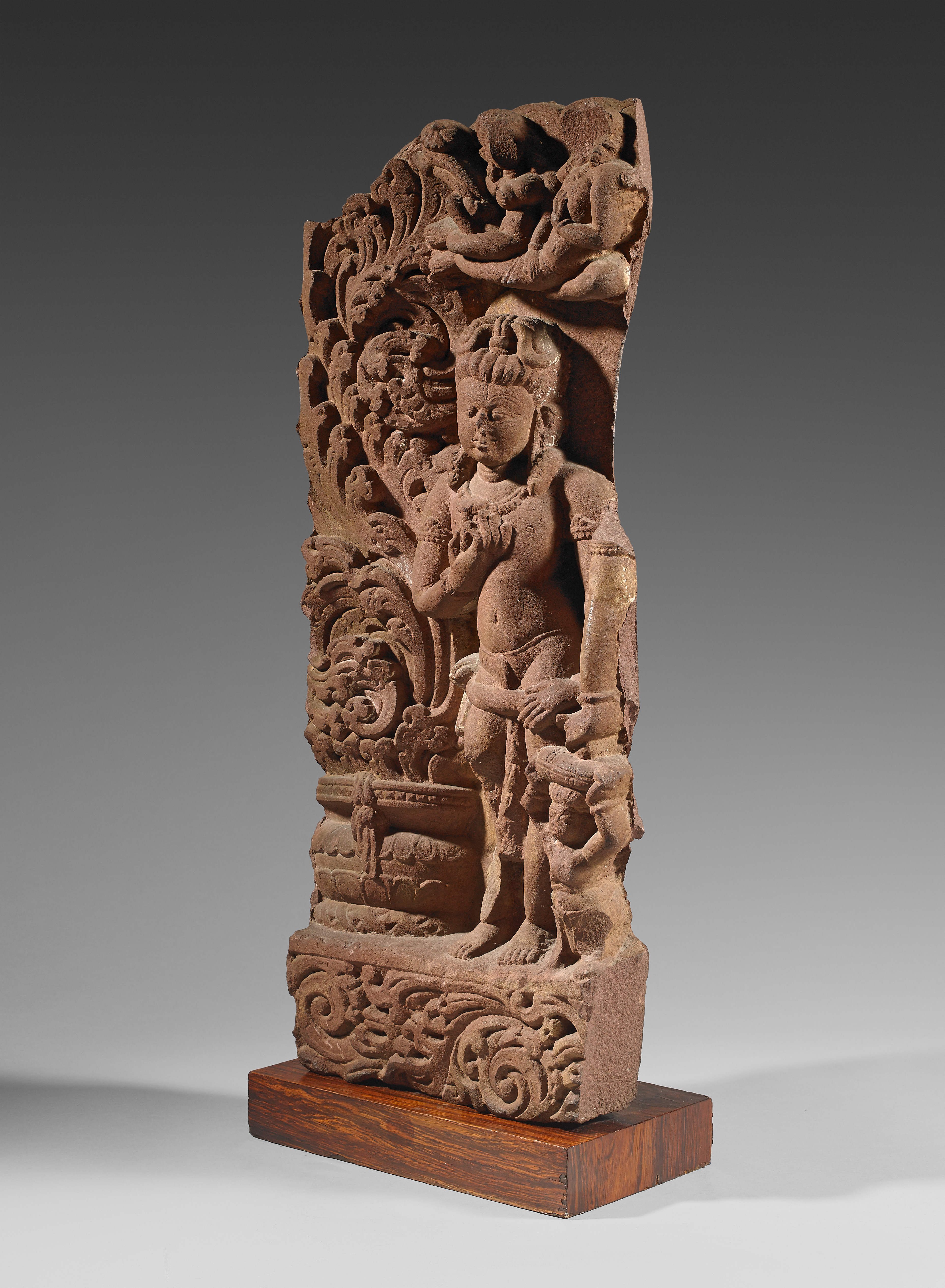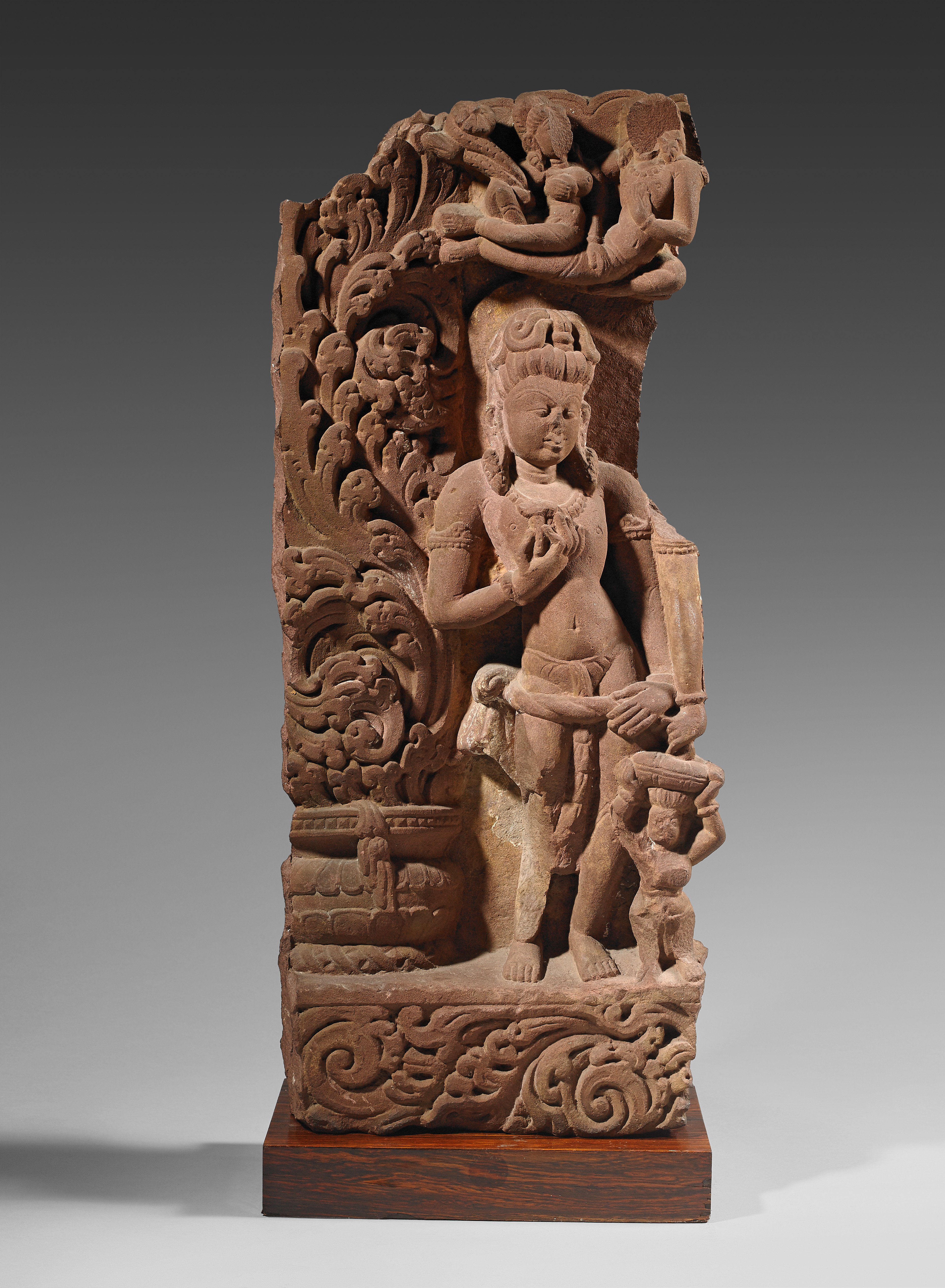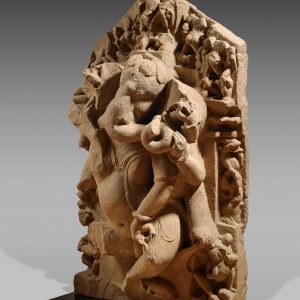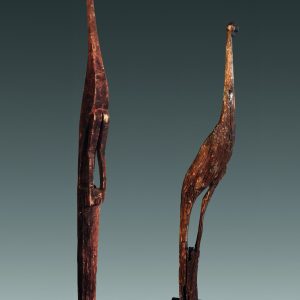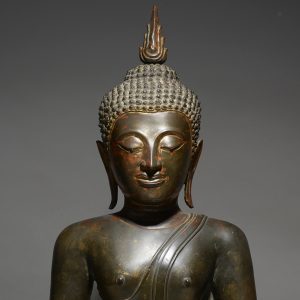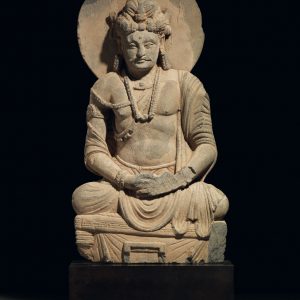Divine attendant
Red Sandstone
India, Rājasthan
Circa 9th century
H. 69 cm
Description
This architectural fragment is the left side of a niche or of a door frame. The right side is incomplete because only the arm and hand of a missing character are visible, touching a dwarf holding an unidentifiable attribute.
A svelte male deity with a yellow body takes up most of the relief. He is in a slight three bend pose (tribangha) even though the line of the shoulders remains horizontal and doesn’t slope in the direction opposite that of the waist. His left hand rests on his hip, his right is in front of his chest and holds an object which is difficult to identify, a gem or more probably a fruit, perhaps a citron (bijapura) or else, given its small size, the fruit of the bael (bilva) tree, called “excellent fruit” (sriphala) which was often held by Lakshmi and Sri, wives of Vishnu, among others.
This character is found on the abutments of temples as of the start of the medieval period – for example in Mandasor (Rajastan) and Bharnakhurd (Museum of Mathura) – and was reproduced by O. Viennot (1962, pl 18a and 36a). This author identifies the character as a guardian of the door (dvarapala). However, the absence of any weapons makes this conclusion seem erroneous; the bael fruit could imply a vaishnava context.
During the Gupta periods and in the upper Middle Age, there were representations of certain gods who weren’t holding their weapons themselves, but with small characters personifying them who either wore them on their body or held them in their hand. This is true of Vishnu. The enigmatic object on the dwarf’s head could be explained in this context. The wheel (chakra), a fearsome weapon when thrown, and one of the main attributes of Vishnu, is represented here edgewise. This interpretation does remain questionable though, considering that the right side of the relief is broken.
Above, a couple of flying genies (gandharva), in a graceful pose, lend a dynamic tone to the entire composition. On the left, a haut-relief rinceau of various shapes spills out of an urn of plenty (purnaghata), reinforcing this lyric impression.
Provenance : Nasli and Alice Heeramaneck collection, Sotheby’s New York, 2004.
- Viennot, Odette, Les Divinités fluviales Gaṅgā et Yamunā aux portes des sanctuaires de l’Inde. Paris : P.U.F., 1964

